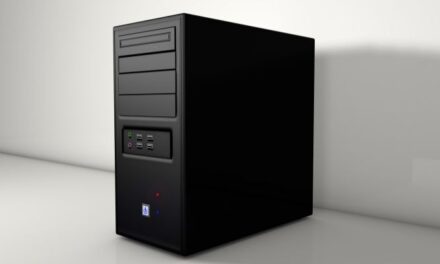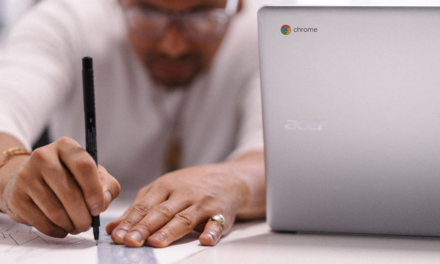Curved monitors are better at filling our eye’s natural field of view and this helps to create a more immersive viewing experience that is less strenuous on the eyes.
This might hold true for gaming and watching movies but are curved monitors also better for programming?
Table of Contents
Is A Curved Monitor Good For Coding?

A curved monitor is good for coding and can make it more immersive and less strenuous on your eyes as long as the screen size is over 30 inches and not more than about 38 inches wide.
At less than 30 inches wide, your peripheral vision can take in the whole of a flat-screen monitor, so you’re not really getting the full benefit of a curved display if it’s less than 30 inches wide.
Likewise, if the curved screen is too wide, your peripheral vision won’t be large enough to take in the whole of the display and you’ll lose the main benefit of having the curve in the first place.
For example, with a 49-inch curved display, you might find yourself physically moving your head and swiveling in your chair to take in different parts of the display.
You might still love coding on a 49-inch curved monitor; many programmers do, just keep in mind that on a very wide screen you lose the benefit of having the whole display in your peripheral vision.
At a width of between 28 and 38 inches, curved monitors fill your peripheral vision, provide a fuller, more natural image that provides additional benefits for coding over flat displays of a similar size.
The Disadvantages Of Using A Curved Monitor For Coding
The disadvantages of using a curved monitor for programming are that they are more expensive, they take up more space on a desk, they have limited viewing angles and they can be difficult to mount on a wall.
You Might Also Like: Are Gaming Monitors Good For Programming? (Explained)
They Are More Expensive
Curved monitors are more expensive than flat monitors of the same size because they cost more for manufactures to produce.
They are also more common in larger sizes and usually marketed as higher-end models, so more screen real estate and more features like a higher resolution and refresh rate equals a higher price tag.
They Take Up More Desk Space
Due to the aspect ratio of curved monitors, they are usually a lot wider than they are tall and this often amounts to taking up the entirety of the length of your desk.
If a monitor has a curve it will naturally take up a little more space on your desk than a flat monitor of the same size would.
All this can add up to you losing quite a lot of desk space to your curved monitor so if your desk isn’t the biggest you may need to upgrade that before your display.
They Have Limited Viewing Angles
If you want to take advantage of the extra immersion and less strenuous eye viewing experience that a curved monitor can provide, you need to be positioned directly in front of the screen.
If you are sitting at an angle to the monitor, or you get up and move from the screen then your view will be distorted by the curve and you’ll struggle to see what’s being displayed.
They Are Difficult To Mount On A Wall
Many coders choose to mount their monitor on the wall to free up space on their desks but this isn’t always so easy when dealing with a curved display.
To mount a curved monitor on the wall you won’t be able to use standard wall mounts.
You’ll have to buy a special wall bracket and fittings to mount the curved screen on and you might only be able to get those from the manufacturer.
How To Choose A Curved Monitor For Coding
When deciding on a curved monitor for coding, you should consider the screen’s aspect ratio, resolution, and the type of setup you want.
Many programmers like a little more vertical screen real estate than many ultra-wide curved monitors offer.
If you want vertical space to see more lines of code on your screen, consider a curved display that offers a 16:9 or 16:10 ratio.
The higher the screen resolution you can get the better but you’ll want a minimum of 1080p so that the code is clear enough to see.
You should also consider the type of setup you would like.
Some coders like to have a widescreen monitor for browsing the internet and watching videos plus another monitor set up vertically to view large blocks of code all at once.
Others like to create separate windows for programming, web browsing, and checking notes and emails on two 27-inch monitors side by side in landscape mode.
And some programmers can make do with dividing one ultrawide monitor into 3 or 4 windows for coding, web browsing, and watching videos.
The screen setup that works for you will depend largely on your budget, how much space you have, what sort of programming you do, how much multitasking you do, and how much vertical space is needed to display your code.
If your budget is tight it’s best to take some time to shop around.
Sometimes you might be able to find an awesome deal on a single ultrawide monitor while other times it could make more financial sense to go with two smaller monitors.
In conclusion, a curved monitor can offer a more immersive and less strenuous experience on your eyes for programming, but it’s important to consider the possible downsides like cost and poor viewing angles before deciding if a curved monitor is right for you.



